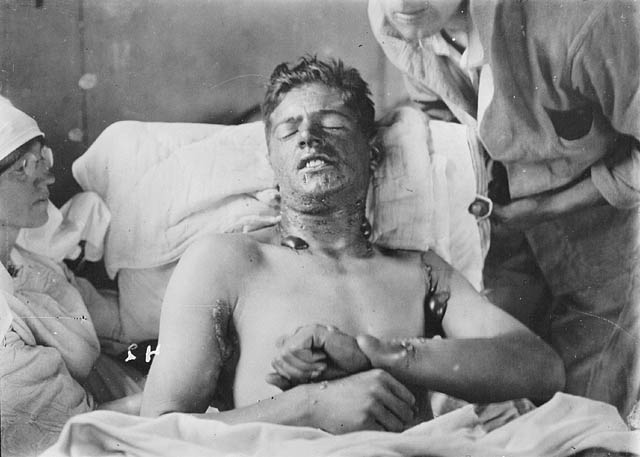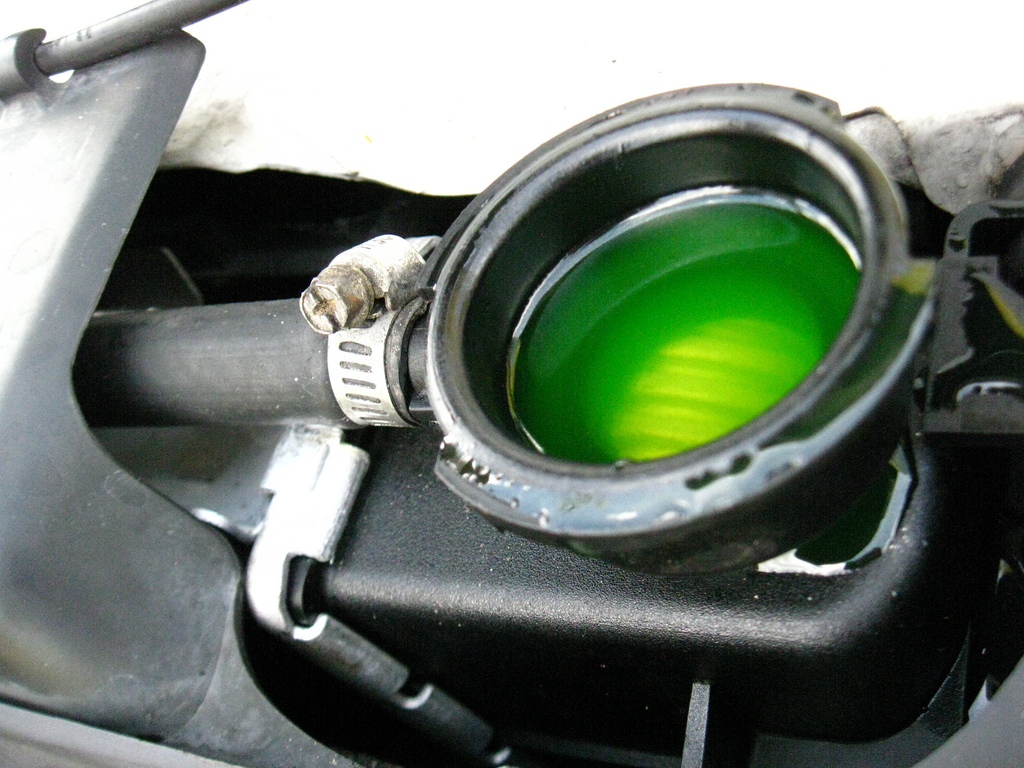|
Yellow Cross (chemical Warfare)
Yellow Cross (Gelbkreuz) is a World War I chemical warfare agent usually based on mustard gas (sulfur mustard, HS, Yperite, Lost). The original Gelbkreuz was a composition of 80–90% of sulfur mustard and 10–20% of tetrachloromethane or chlorobenzene as a solvent which lowered its viscosity and acted as an antifreeze, or, alternatively, 80% sulfur mustard, 10% bis(chloromethyl) ether, and 10% tetrachloromethane. A later formulation, Gelbkreuz 1, was a mixture of 40% ethyldichloroarsine, 40% ethyldibromoarsine, and 20% of bis(chloromethyl) ether. In some cases nitrobenzene was used to mask the material's characteristic odour. French "ypérite no.20" was a similar mixture of 80% sulfur mustard and 20% tetrachloromethane. Yellow Cross is also a generic World War I German marking for artillery shells with chemical payload affecting the skin. See also * Green Cross (chemical warfare) * Blue Cross (chemical warfare) Blue Cross () is a German World War I chemical warfare a ... [...More Info...] [...Related Items...] OR: [Wikipedia] [Google] [Baidu] |
World War I
World War I or the First World War (28 July 1914 – 11 November 1918), also known as the Great War, was a World war, global conflict between two coalitions: the Allies of World War I, Allies (or Entente) and the Central Powers. Fighting took place mainly in European theatre of World War I, Europe and the Middle Eastern theatre of World War I, Middle East, as well as in parts of African theatre of World War I, Africa and the Asian and Pacific theatre of World War I, Asia-Pacific, and in Europe was characterised by trench warfare; the widespread use of Artillery of World War I, artillery, machine guns, and Chemical weapons in World War I, chemical weapons (gas); and the introductions of Tanks in World War I, tanks and Aviation in World War I, aircraft. World War I was one of the List of wars by death toll, deadliest conflicts in history, resulting in an estimated World War I casualties, 10 million military dead and more than 20 million wounded, plus some 10 million civilian de ... [...More Info...] [...Related Items...] OR: [Wikipedia] [Google] [Baidu] |
Mustard Gas
Mustard gas or sulfur mustard are names commonly used for the organosulfur compound, organosulfur chemical compound bis(2-chloroethyl) sulfide, which has the chemical structure S(CH2CH2Cl)2, as well as other Chemical species, species. In the wider sense, compounds with the substituents are known as ''sulfur mustards'' or ''nitrogen mustards'', respectively, where X = Cl or Br. Such compounds are potent alkylating agents, making mustard gas acutely and severely toxic. Mustard gas is a carcinogen. There is no preventative agent against mustard gas, with protection depending entirely on skin and airways protection, and no antidote exists for mustard poisoning. Also known as mustard agents, this family of compounds comprises infamous cytotoxicity, cytotoxins and blister agents with a long history of use as chemical weapons. The name ''mustard gas'' is technically incorrect; the substances, when Dispersion (chemistry), dispersed, are often not gases but a fine mist of liquid droplet ... [...More Info...] [...Related Items...] OR: [Wikipedia] [Google] [Baidu] |
Tetrachloromethane
Carbon tetrachloride, also known by many other names (such as carbon tet for short and tetrachloromethane, also IUPAC nomenclature of inorganic chemistry, recognised by the IUPAC), is a chemical compound with the chemical formula CCl4. It is a non-flammable, dense, colourless liquid with a "sweet" chloroform-like odour that can be detected at low levels. It was formerly widely used in fire extinguishers, as a precursor to refrigerants, an anthelmintic and a cleaning agent, but has since been phased out because of environmental and safety concerns. Exposure to high concentrations of carbon tetrachloride can affect the central nervous system and degenerate the liver and kidneys. Prolonged exposure can be fatal. Properties In the carbon tetrachloride molecule, four chlorine atoms are positioned symmetrically as corners in a tetrahedron, tetrahedral configuration joined to a central carbon atom by single covalent bonds. Because of this symmetric geometry, CCl4 is non-polar. methane, ... [...More Info...] [...Related Items...] OR: [Wikipedia] [Google] [Baidu] |
Chlorobenzene
Chlorobenzene (abbreviated PhCl) is an aryl chloride and the simplest of the chlorobenzenes, consisting of a benzene ring substituted with one chlorine atom. Its chemical formula is C6H5Cl. This colorless, flammable liquid is a common solvent and a widely used intermediate in the manufacture of other chemicals. Uses The major use of chlorobenzene is as a precursor for further intermediates such as nitrophenols, nitroanisole, chloroaniline, and phenylenediamines, which are used in the production of herbicides, dyestuffs, chemicals for rubber, and pharmaceuticals. It is also used as a high-boiling solvent in industrial and laboratory applications, for materials such as oils, waxes, resins, and rubber. Chlorobenzene is nitrated on a large scale to give a mixture of 2-nitrochlorobenzene and 4-nitrochlorobenzene, which are separated and used as intermediates in production of other chemicals. These mononitrochlorobenzenes are converted to related 2-nitrophenol, 2-nitroanis ... [...More Info...] [...Related Items...] OR: [Wikipedia] [Google] [Baidu] |
Solvent
A solvent (from the Latin language, Latin ''wikt:solvo#Latin, solvō'', "loosen, untie, solve") is a substance that dissolves a solute, resulting in a Solution (chemistry), solution. A solvent is usually a liquid but can also be a solid, a gas, or a supercritical fluid. Water is a solvent for Chemical polarity#Polarity of molecules, polar molecules, and the most common solvent used by living things; all the ions and proteins in a Cell (biology), cell are dissolved in water within the cell. Major uses of solvents are in paints, paint removers, inks, and dry cleaning. Specific uses for Organic compound, organic solvents are in dry cleaning (e.g. tetrachloroethylene); as paint thinners (toluene, turpentine); as nail polish removers and solvents of glue (acetone, methyl acetate, ethyl acetate); in spot removers (hexane, petrol ether); in detergents (D-limonene, citrus terpenes); and in perfumes (ethanol). Solvents find various applications in chemical, pharmaceutical, oil, and gas ... [...More Info...] [...Related Items...] OR: [Wikipedia] [Google] [Baidu] |
Antifreeze
An antifreeze is an additive which lowers the freezing point of a water-based liquid. An antifreeze mixture is used to achieve freezing-point depression for cold environments. Common antifreezes also increase the boiling point of the liquid, allowing higher coolant temperature. However, all common antifreeze additives also have lower heat capacity, heat capacities than water, and do reduce water's ability to act as a coolant when added to it. Because water has good properties as a coolant, water plus antifreeze is used in internal combustion engines and other heat transfer applications, such as HVAC chillers and solar water heaters. The purpose of antifreeze is to prevent a rigid enclosure from bursting due to expansion when ice, water freezes. Commercially, both the ''additive'' (pure concentrate) and the ''mixture'' (diluted solution) are called antifreeze, depending on the context. Careful selection of an antifreeze can enable a wide temperature range in which the mixture remain ... [...More Info...] [...Related Items...] OR: [Wikipedia] [Google] [Baidu] |
Bis(chloromethyl) Ether
Bis(chloromethyl) ether is an organic compound with the chemical formula (ClCH2)2O. It is a colourless liquid with an unpleasant suffocating odour and it is one of the chloroalkyl ethers. Bis(chloromethyl) ether was once produced on a large scale, but was found to be highly carcinogenic and thus such production has ceased. Synthesis It was produced industrially from paraformaldehyde and a mixture of chlorosulfonic acid and sulfuric acid. It is also produced as a byproduct in the Blanc chloromethylation reaction, formed when formaldehyde (the monomer, paraformaldehyde or formalin) and concentrated hydrochloric acid are mixed, and is a known impurity in technical grade chloromethyl methyl ether. Because of their carcinogenic potency, the industrial production of chloromethyl ethers ended in most countries in the early 1980s. Bis(chloromethyl) ether was no exception to this with production in the U.S.A. ending in 1982. Uses Bis(chloromethyl) ether has been extensively used in chem ... [...More Info...] [...Related Items...] OR: [Wikipedia] [Google] [Baidu] |
Ethyldichloroarsine
Ethyldichloroarsine, sometimes abbreviated as "ED" and "CY" and also known as ethyl Dick, is an organoarsenic compound with the formula CH3CH2AsCl2. This colourless volatile liquid is a highly toxic obsolete vesicant or blister agent that was used during World War I in chemical warfare. The molecule is pyramidal with the Cl-As-Cl and C-As-Cl angles approaching 90° (see image). Ethyldichloroarsine has high chronic toxicity, similar to lewisite Lewisite (L) (A-243) is an organoarsenic compound. It was once manufactured in the United States, Japan, Germany and the Soviet Union for use as a Chemical warfare, chemical weapon, acting as a vesicant (blister agent) and lung irritant. Although .... References {{Chemical warfare Arsenical vesicants Organoarsenic chlorides ... [...More Info...] [...Related Items...] OR: [Wikipedia] [Google] [Baidu] |
Nitrobenzene
Nitrobenzene is an aromatic nitro compound and the simplest of the nitrobenzenes, with the chemical formula C6H5 NO2. It is a water-insoluble pale yellow oil with an almond-like odor. It freezes to give greenish-yellow crystals. It is produced on a large scale from benzene as a precursor to aniline. In the laboratory, it is occasionally used as a solvent, especially for electrophilic reagents. As confirmed by X-ray crystallography, nitrobenzene is a planar molecule. Production Nitrobenzene is prepared by nitration of benzene with a mixture of concentrated sulfuric acid, water, and nitric acid. This mixture is sometimes called "mixed acid." The production of nitrobenzene is one of the most dangerous processes conducted in the chemical industry because of the exothermicity of the reaction (Δ''H'' = −117 kJ/mol). World capacity for nitrobenzene in 1985 was about 1,700,000 tonnes. The nitration process involves formation of the nitronium ion (NO2+), followed by an e ... [...More Info...] [...Related Items...] OR: [Wikipedia] [Google] [Baidu] |
Green Cross (chemical Warfare)
Green Cross (Grünkreuz) is a German World War I chemical warfare pulmonary agent consisting of chloropicrin (PS, Aquinite, Klop), phosgene (CG, Collongite) and/or trichloromethyl chloroformate (Surpalite, Perstoff). Green Cross is also a generic World War I German marking for artillery shells with pulmonary agents (chemical payload affecting the lungs). The tip of the projectile with the fuse end painted green and a green cross at the bottom of the cartridge. Other Green Cross mixtures were based on phosgene and/or diphosgene. The first use of Green Cross was on May 31 1915 in a German offensive in Ypres. The mixture was chlorine-phosgene, with 95% and 5%. See also * Blue Cross (chemical warfare) Blue Cross () is a German World War I chemical warfare agent consisting of diphenylchloroarsine (DA, Clark I), diphenylcyanoarsine (CDA, Clark II), ethyldichloroarsine (Dick), and/or methyldichloroarsine (Methyldick). Clark I and Clark II were th ... * Yellow Cross (chemical ... [...More Info...] [...Related Items...] OR: [Wikipedia] [Google] [Baidu] |


